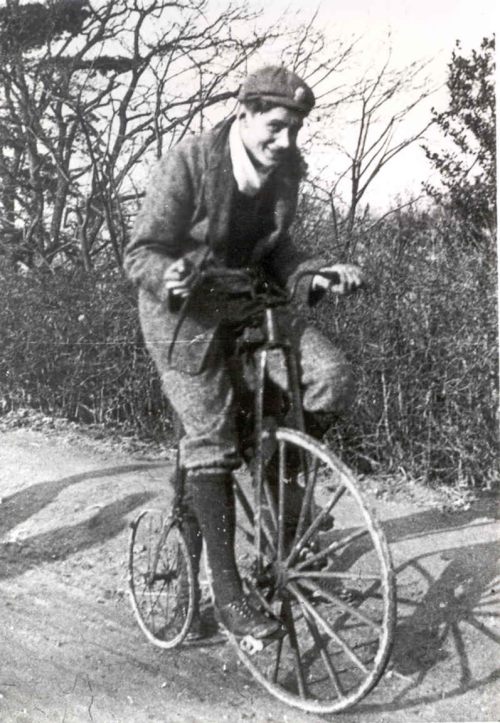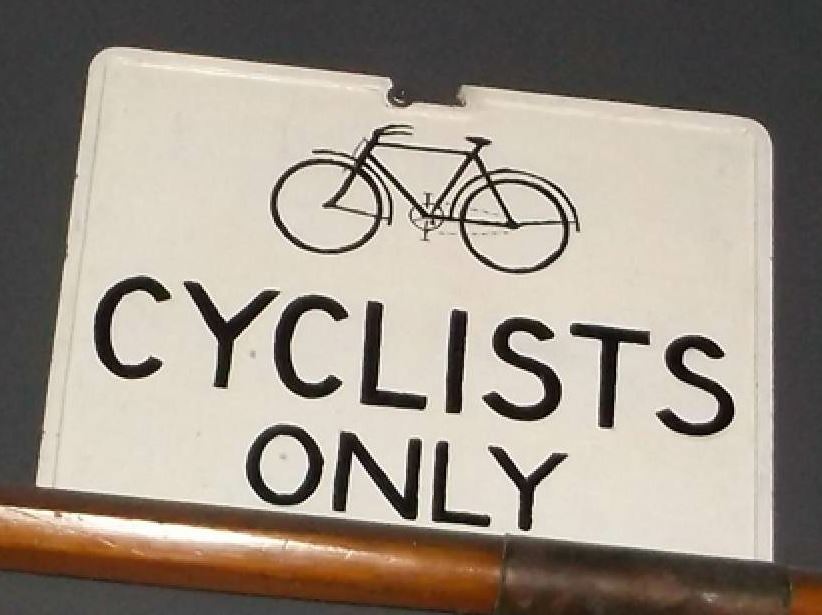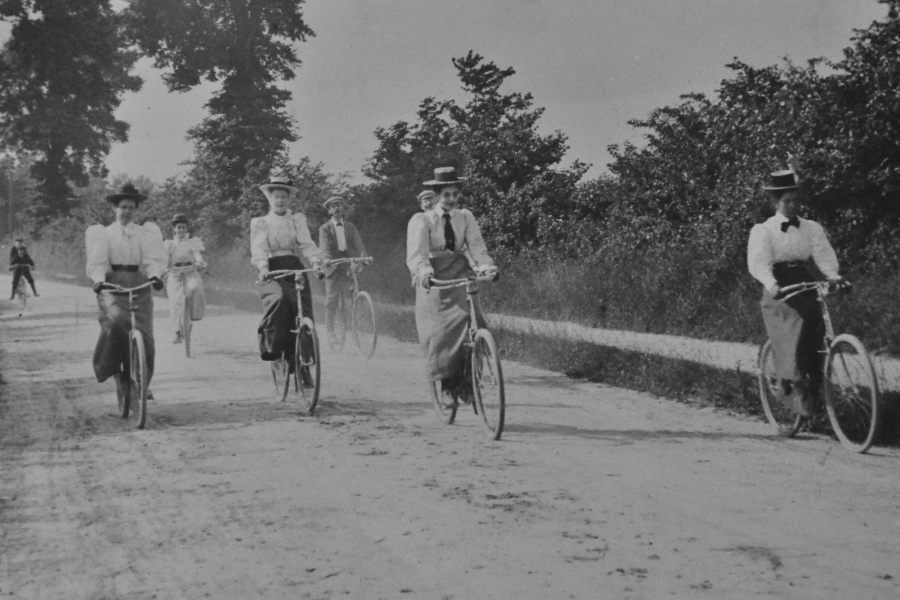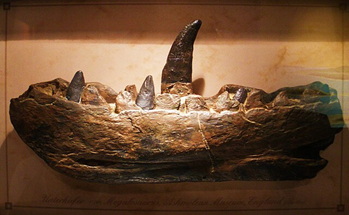Why is Oxford obsessed with bicycles?
Oxford is a cycling city. As a mode of transport for ‘Town and Gown’ alike cycling has long been the most efficient way of getting around the city centre. Bicycles stacked up against college walls and adorning railings are a familiar part of the university landscape. The proliferation of cycle racks, cycle paths and dockless bikes is an indication that cycling for all is actively encouraged in Oxford today. There have been cycle clubs in and around Oxford since the late 19th century when the opportunity to enjoy cycling became not just the preserve of the athletic wealthy enthusiast. By 1880 there were some 230 clubs in Britain. Local cycling clubs have long been active both competitively and socially, participating in exchanges with Oxford’s twin city of Leiden.

William Morris as a young man on a penny-farthing
William Morris, later Lord Nuffield (1877-1963) was an early cycling enthusiast, before turning to car manufacturing. He began his cycling career aged 14, initially on a penny-farthing. With its large front wheel, the penny-farthing (invented in the 1870s) while being a faster bicycle than it’s heavier cumbersome predecessors was difficult to mount and dismount and ride on rough surfaces. Despite this it was popular for touring and competitive riding. The invention in 1885 of the Rover safety bicycle by Starley and Sutton of Coventry saw a change in cycling not only as a sport and social activity but also as an efficient and reliable mode of transport for the working population. The design of this bike would look familiar to us today. By 1900 the manufacturer Raleigh had produced a £10 bicycle making cycling even more affordable. William Morris quickly graduated to a safety bicycle, making his own adjustments and improvements to his machine and from the age of 17 in 1894, he became a successful competitive rider winning many cups and medals, some of which are on display in the new museum. The popularity of cycling and cycle building in Oxford at this time is reflected in Kelly’s Directory of 1895-6 which lists 12 cycle makers in Oxford. Morris himself opened his own cycle repair shop in East Oxford in the 1890s.
The Cyclists Touring Club was founded as early as 1878 ‘to promote touring by bicycles and cycles among amateurs’. Herne Hill and Crystal Palace boasted dedicated cycling tracks of cinders or ash. Locally, the Oxonian Bicycle and Tricycle Club ran an annual races and social events at the Iffley Road Running Ground (now more famous as the location of Roger Bannister’s four-minute mile running race). While many clubs, including the Oxonian Bicycle and Tricycle Club, disappeared as the cycle craze of the late 19th early 20th century waned, others came to replace them and still thrive today. The Oxford City Road Club was founded in 1923, and following a schism in 1927 the Oxonian Cycling Club came into being, its members wanting to focus more on track racing rather than time trials. In the fullness of time both clubs would meet for time trials, track and social events such as club runs out to the countryside, setting out on Sundays from The Plain just over Magdalen Bridge culminating with tea in cycle-friendly cafes. As far as track racing went, the Oxonian’s own track was a victim of the construction of the northern by-pass in the 1950s. At this time Oxford lacked a dedicated cycle track for events indeed during the 1950s the lack of purpose-built cycle tracks and indoor tracks in Great Britain in the post-war period was thought to hinder training for Olympic hopefuls.

‘Cyclists Only’ sign
Cycle clubs contribute to the civic life of the city, beginning with the twinning of Oxford with the Dutch city of Leiden in 1946. The Oxford-Leiden link was formed to promote friendship among nations after World War II, with cultural and sporting exchanges taking place each year. During the Festival of Britain of 1951, the Oxonian Cycling Club together with the Oxford City Road Club and Banbury Stars (founded 1891) hosted a visit of Dutch riders from Leiden. A variety of competitive and social events were organized including a visit to the Festival of Britain in London, a supper run to Mrs. Keen’s in Stanford in the Vale, a civic reception hosted by the Lord Mayor at the Town Hall, a 50 kilometres massed start at Kidlington Aerodrome (now renamed London Oxford Airport) followed by tea and a tour at Blenheim Palace. A cartoon in the Oxford Mail at the time quips that the riders wished they could have cycled around the palace rather than have to walk. Oxford cyclists made a return visit to Leiden the following year where it was noted by one member that the country seemed prosperous despite five years of occupation during World War II whereas in contrast food rationing was still in force in Britain at this time. Exchange visits between cyclists from Oxford and Leiden continue today and the Leiden Plaque, originally presented in 1951 is still awarded to the best club in a 25 mile time trial.
Written by MOX volunteer Sue O’Hare.
Want to write your own Oxford-inspired post? Sign up as a volunteer blogger.



